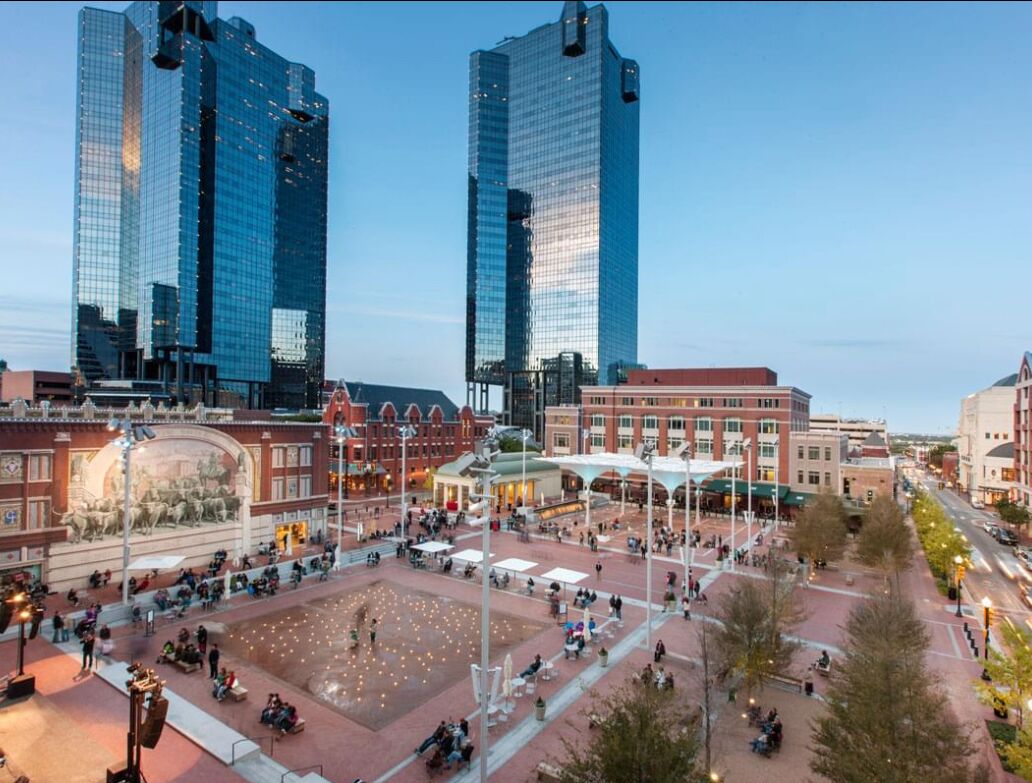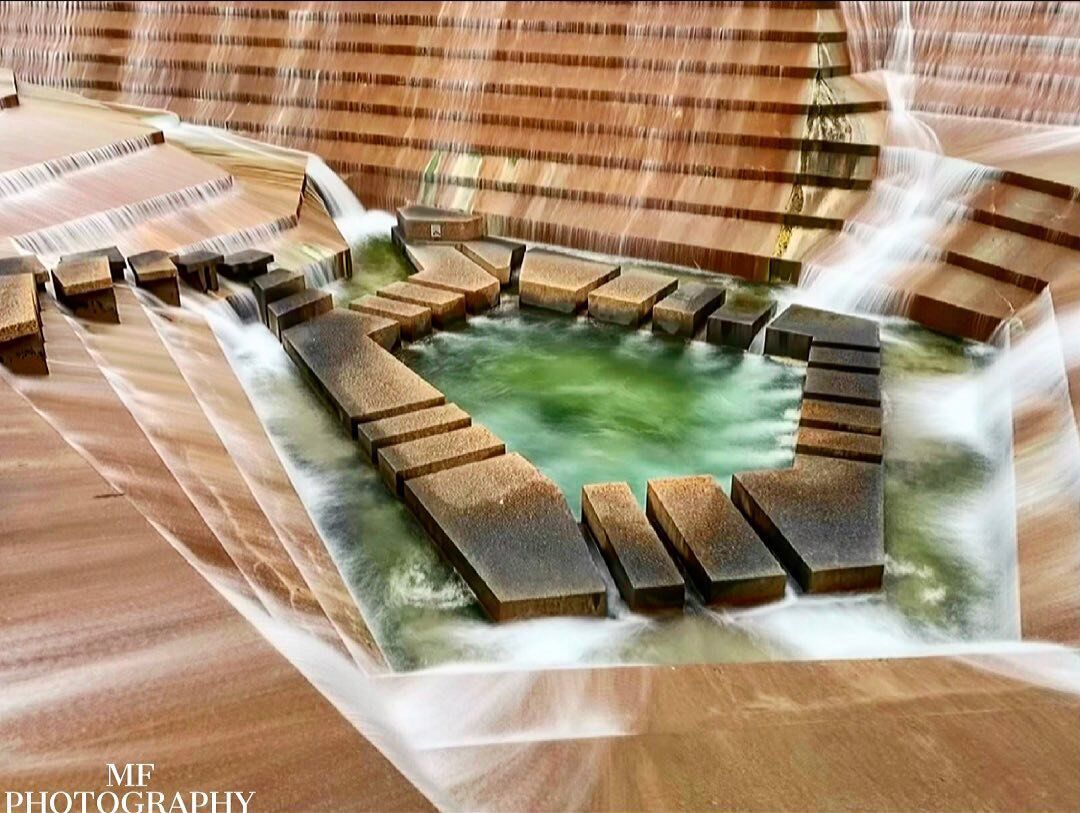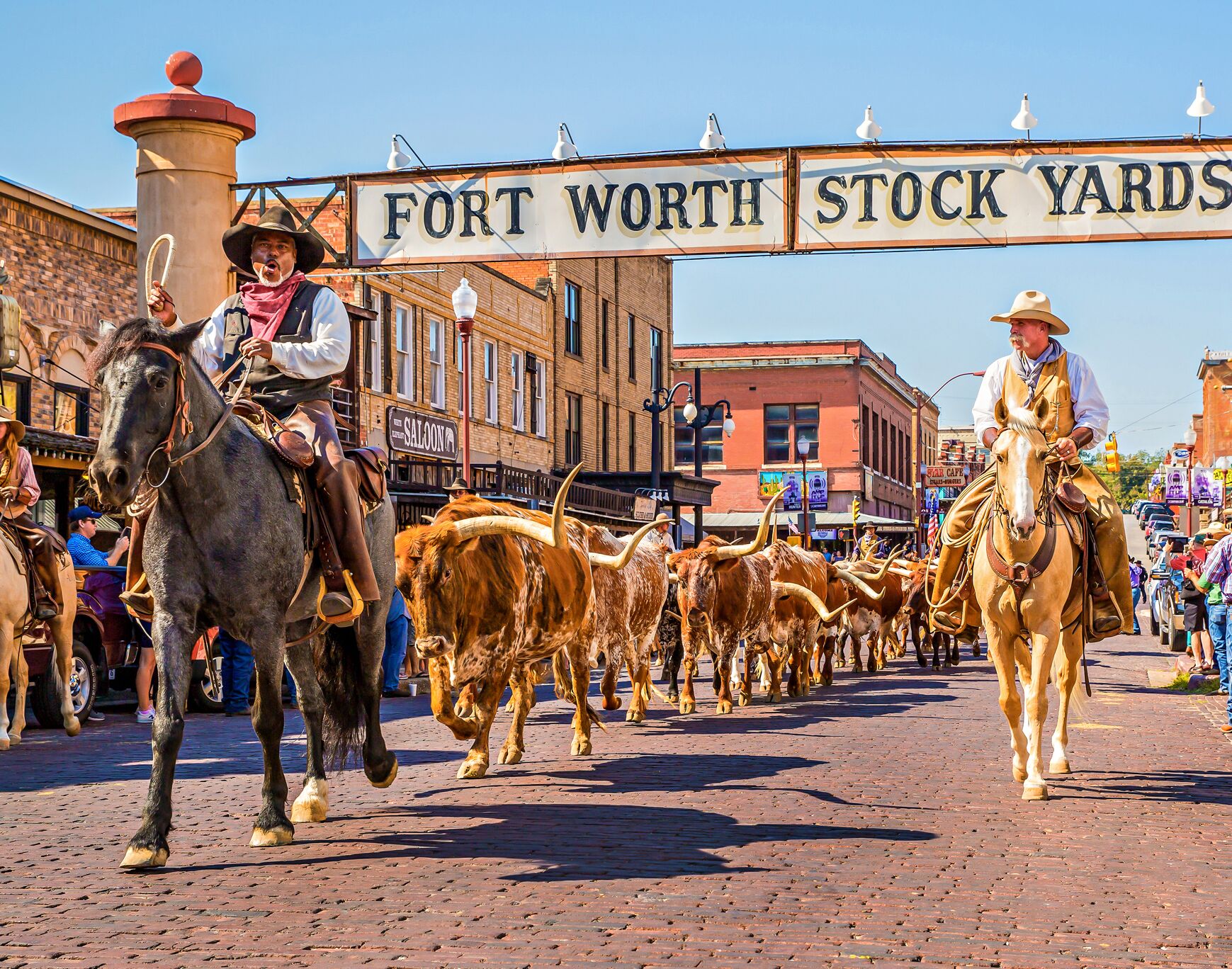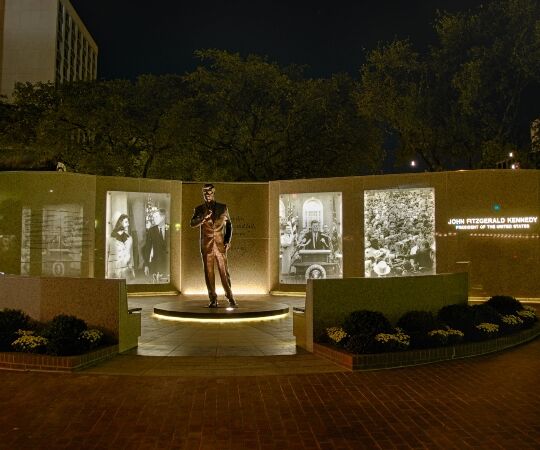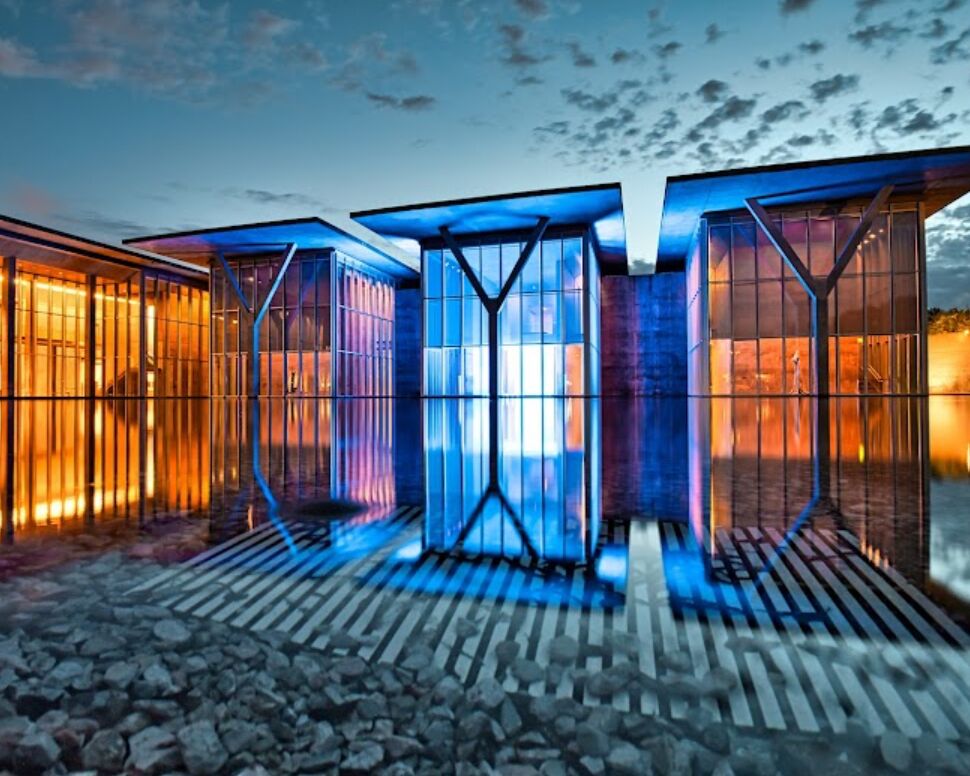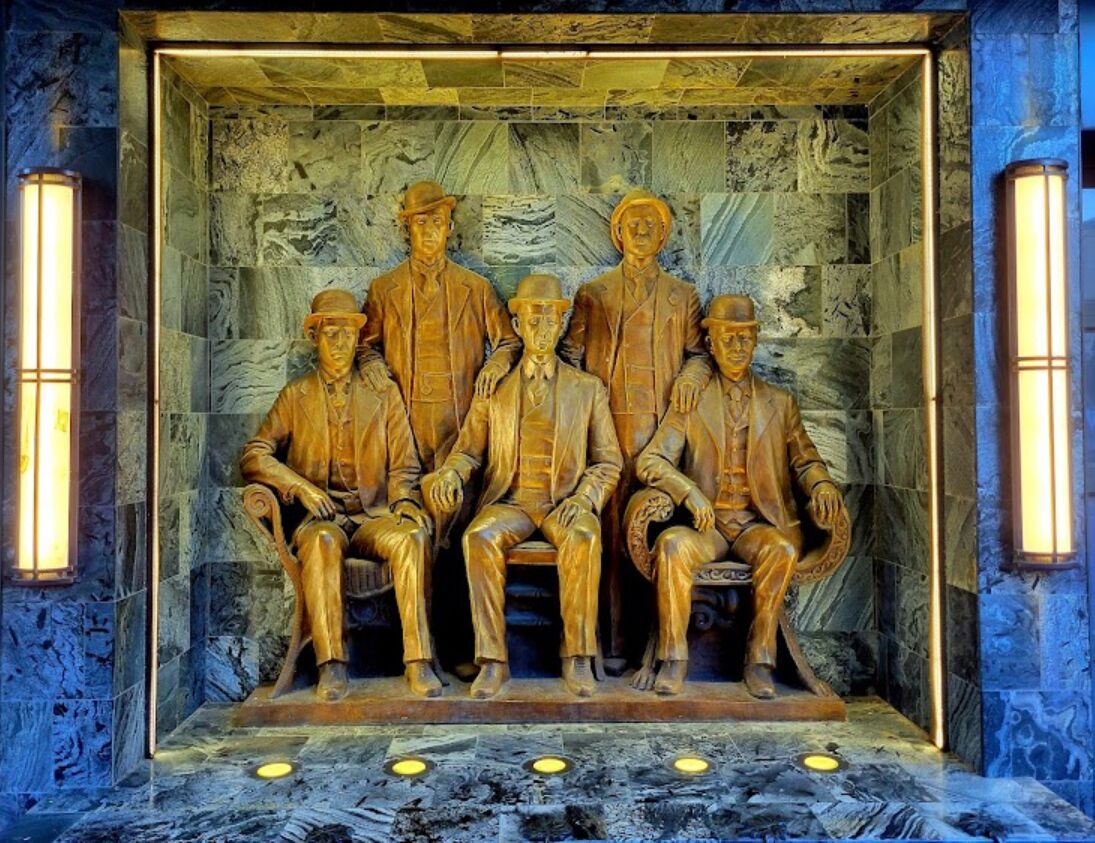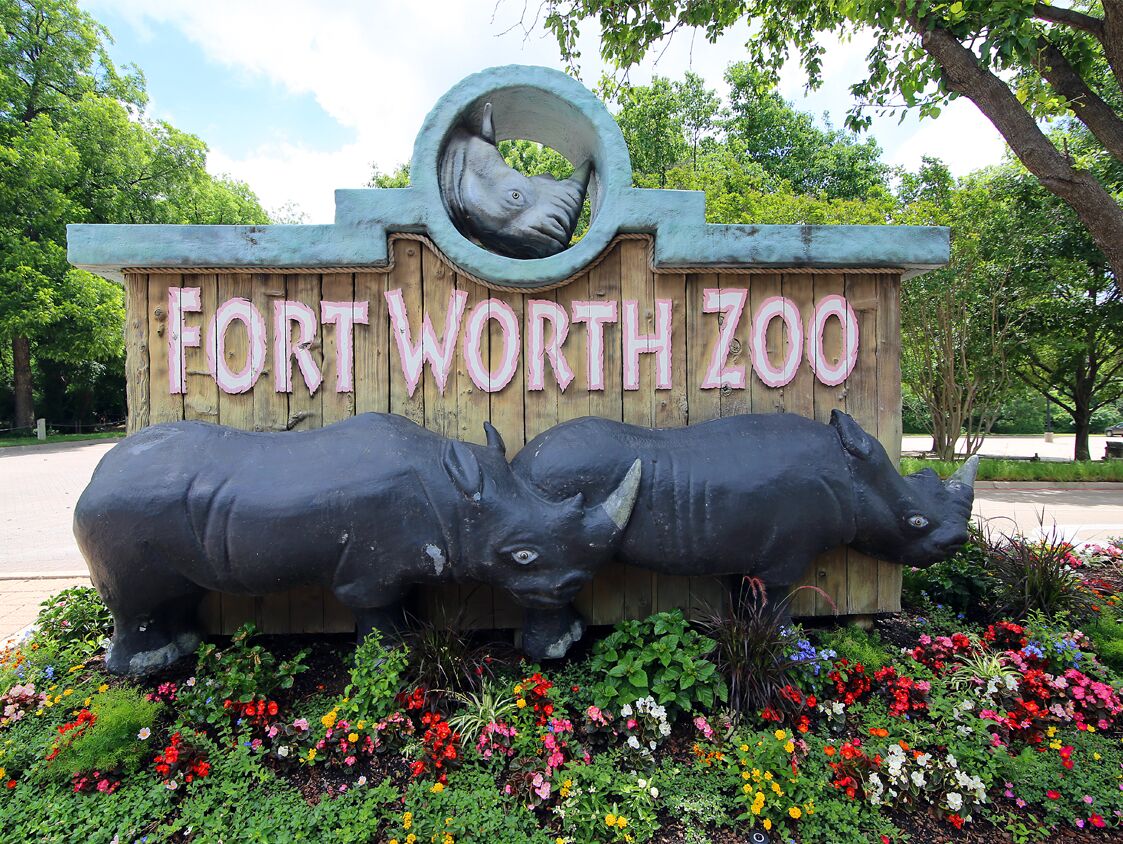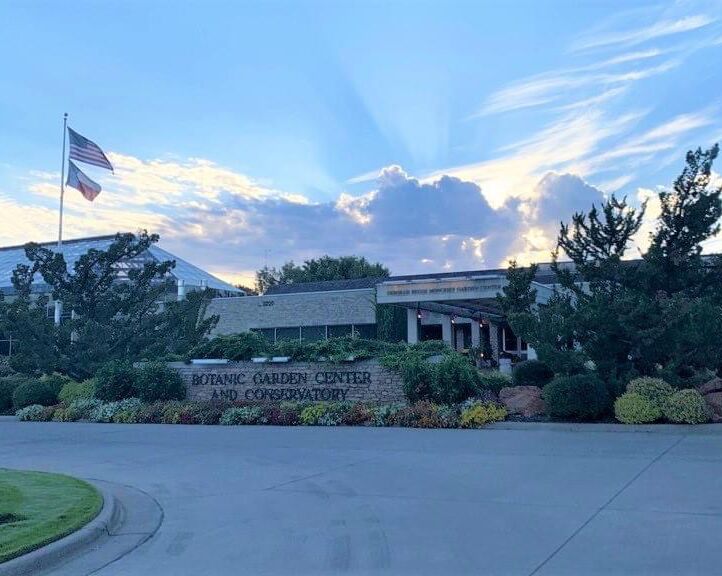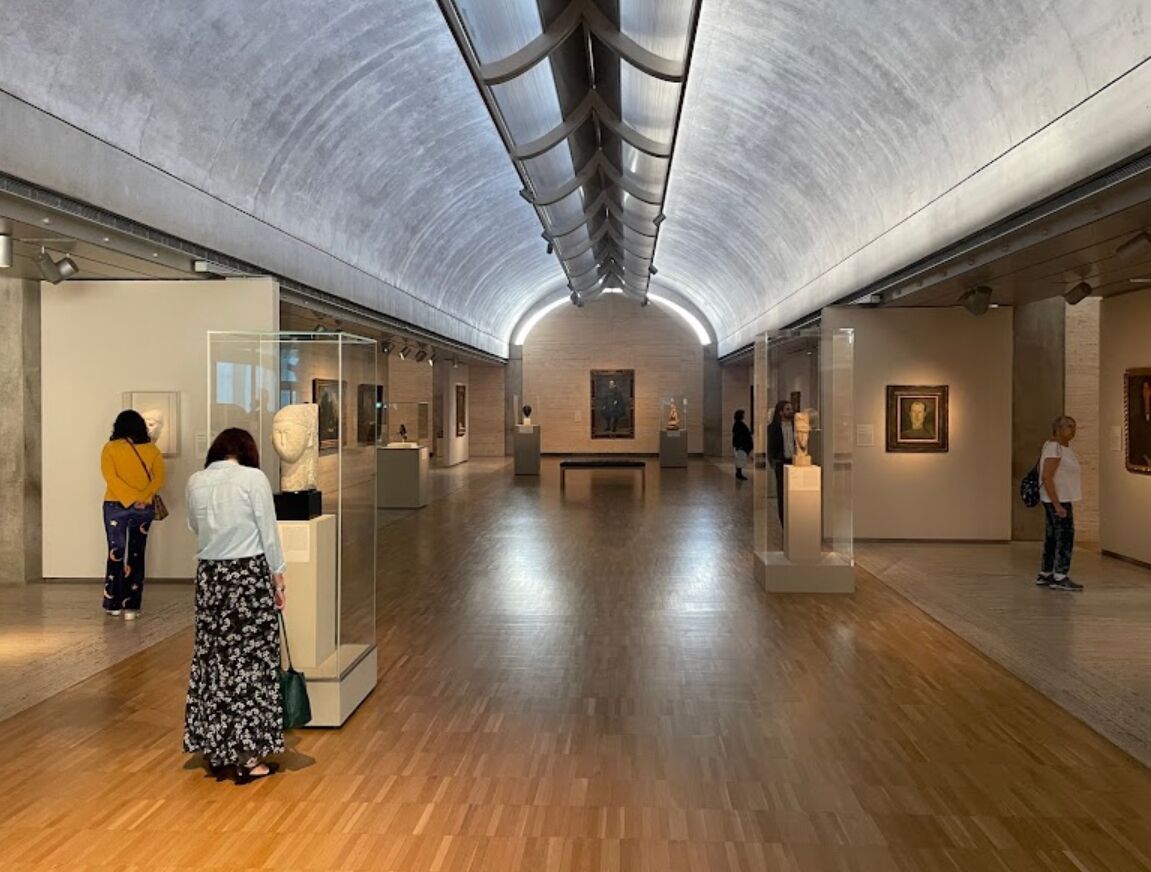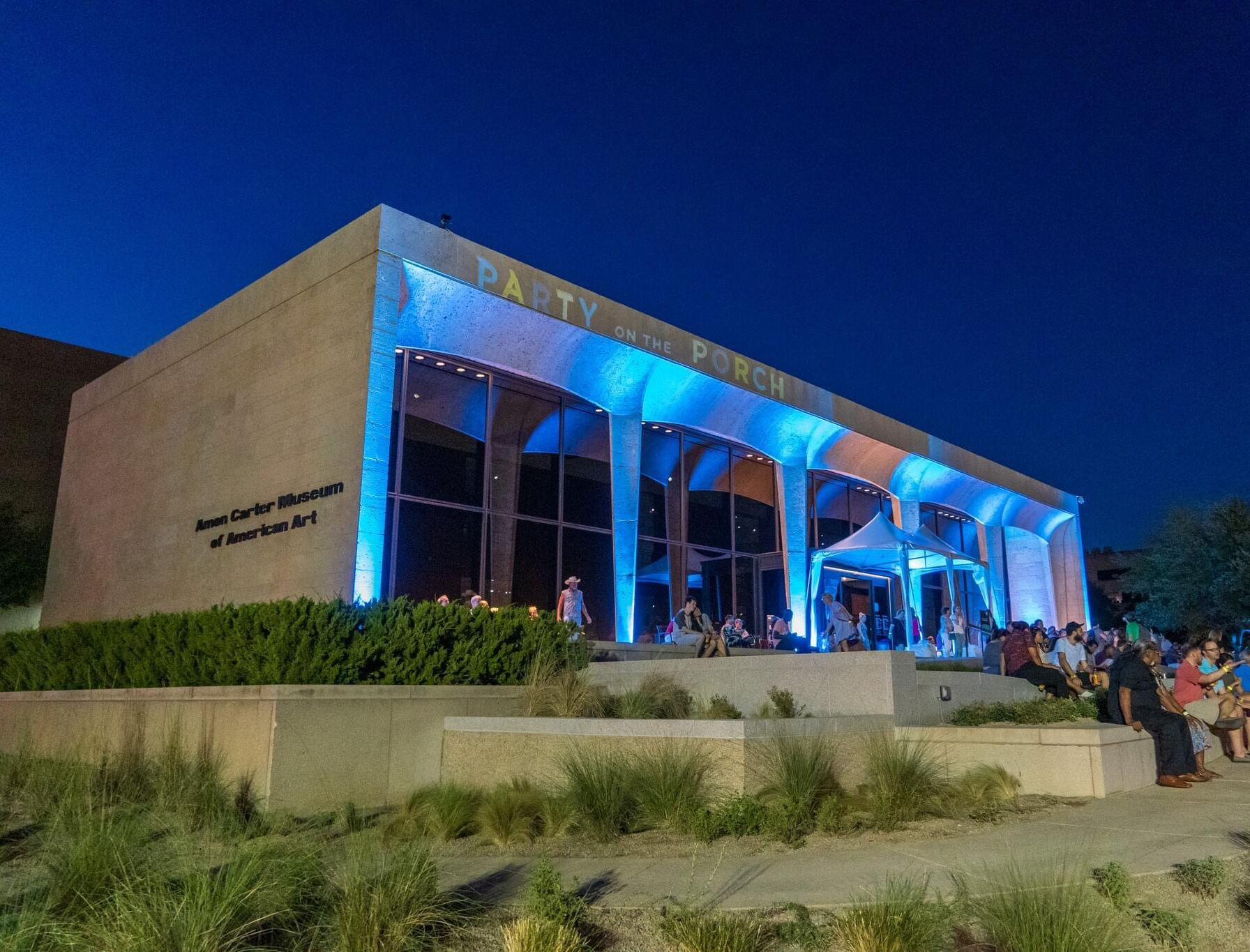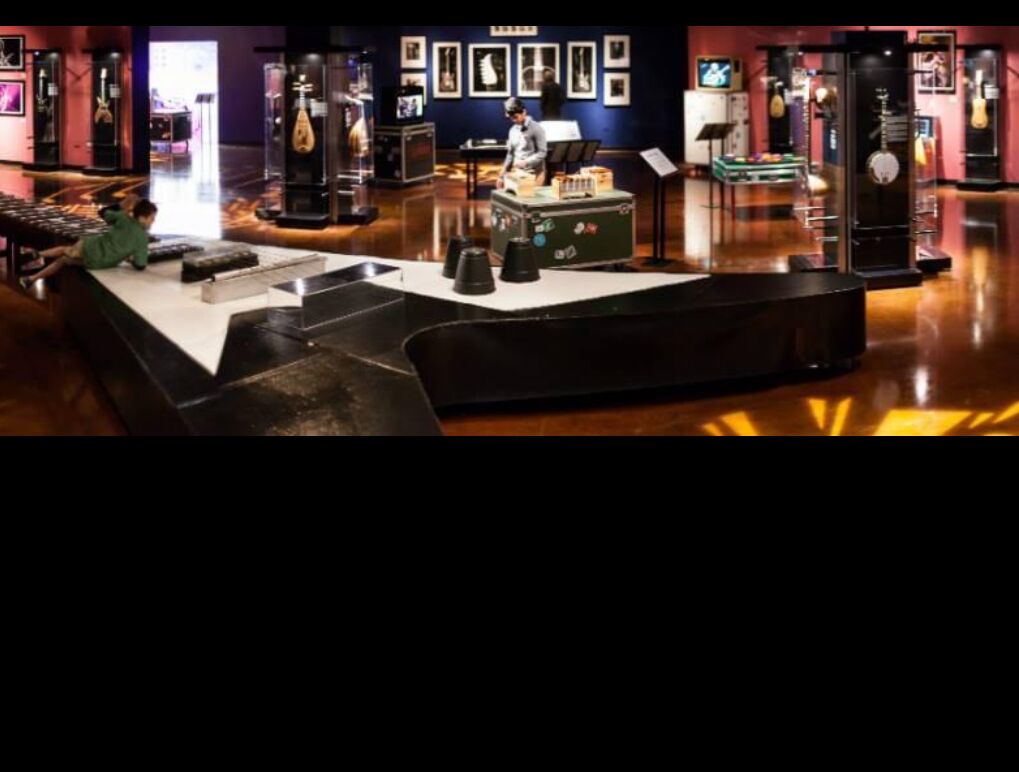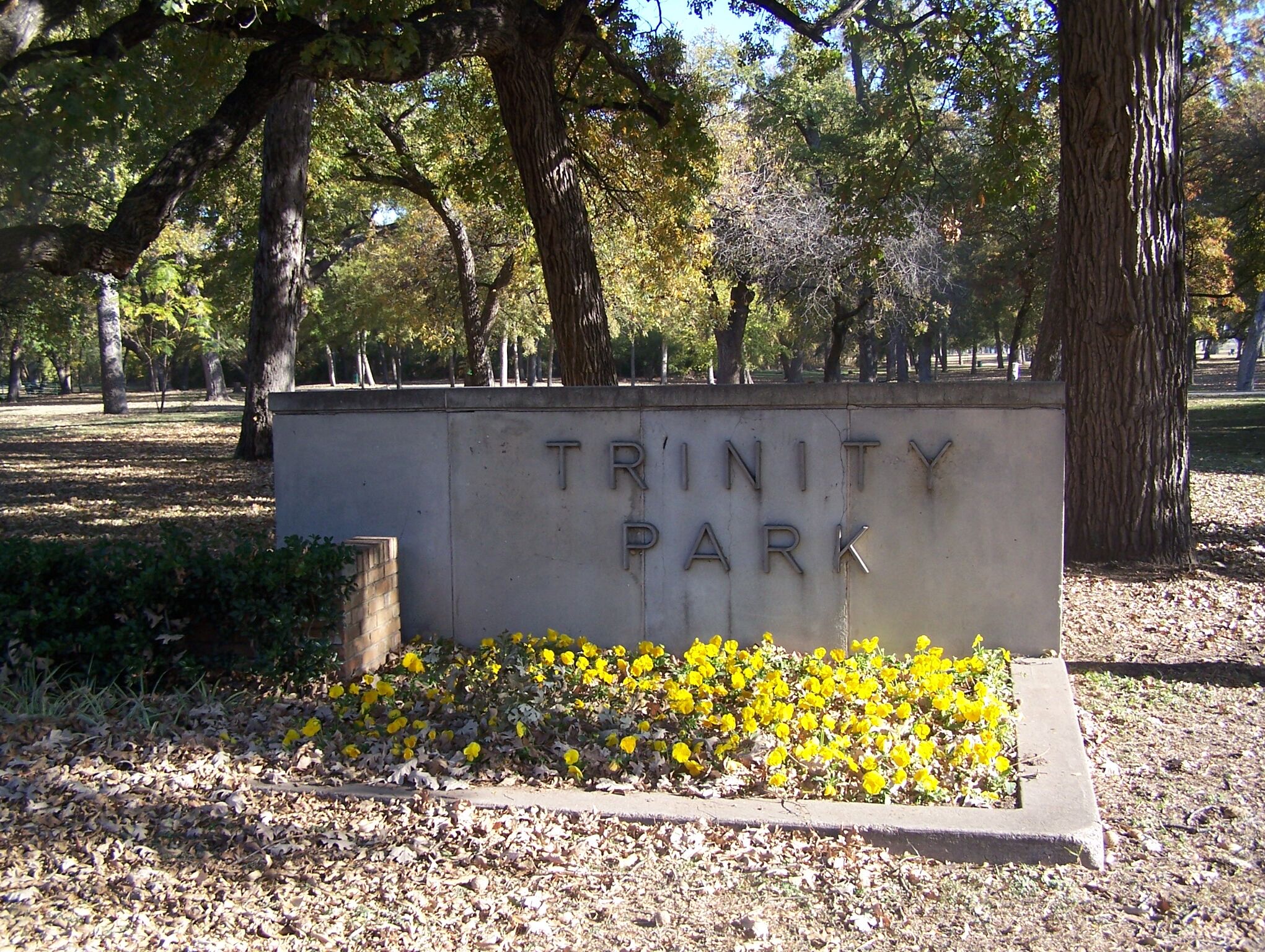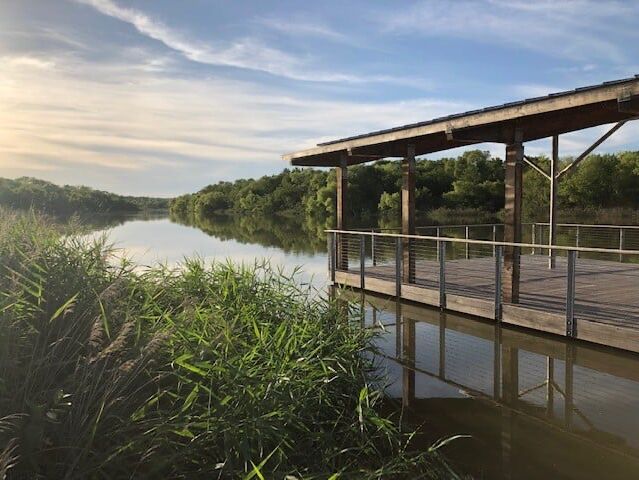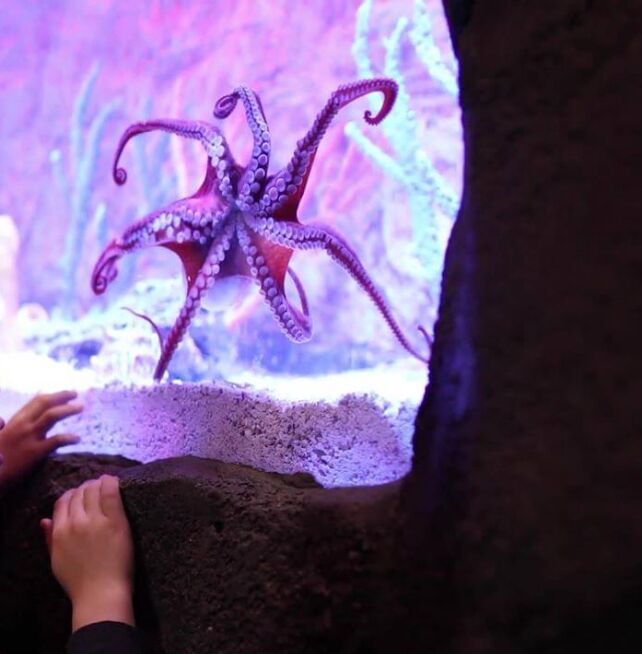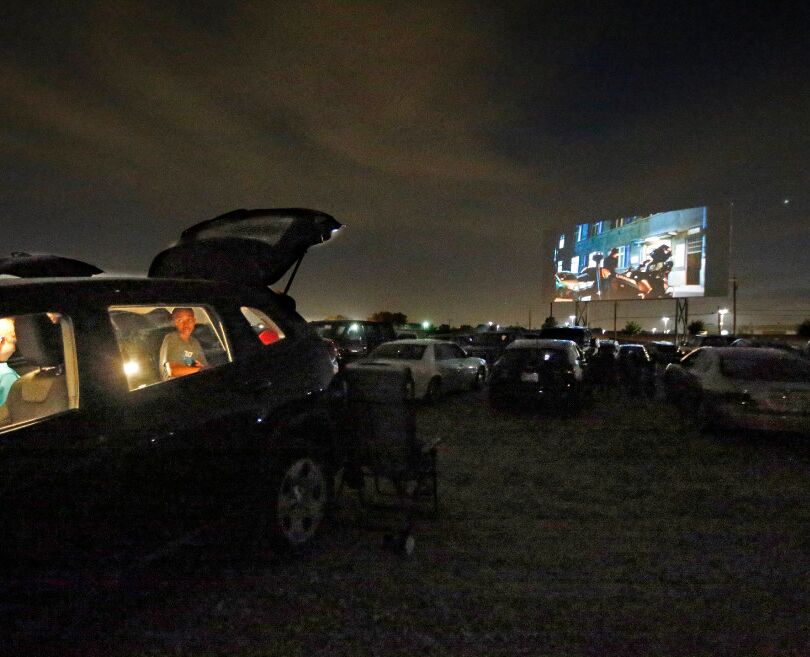
Lindsay & Elijah
Lindsay & Elijah
Sundance Square
Fort Worth Water Gardens
The Fort Worth Water Gardens is a beautiful and refreshing oasis located downtown, adjacent to the Fort Worth Convention Center. Designed by Phillip Johnson (Amon Carter Museum of American Art), the Water Gardens is an architectural and engineering marvel to be enjoyed any time of the year. Visitors can experience a variety of water features as they wander through this relaxing urban plaza. The park features three pools of water: the aerating, the quiet and the active pool.
Escape to a shady sanctuary where the serene quiet pool is the perfect spot to take in the beautiful outdoor nature and relax in Fort Worth.
Fort Worth Stockyards
The Legacy Lives on.
In 1976, Charlie and Sue McCafferty founded the North Fort Worth Historical Society to preserve Fort Worths livestock heritage.
This new venture helped establish the Fort Worth Stockyards National Historical District and bring about the restoration of landmarks including the Livestock Exchange Building, the Coliseum and the former Swift & Co. headquarters.
In 1989, the North Fort Worth Historical Society opened the Stockyards Museum in the historic Exchange Building. Today, the museum hosts thousands of visitors from all over the world each year, and is constantly growing its facilities and its collection.
True to its history, the Stockyards still hosts the world’s only twice-daily cattle drive. All this – plus more than a hundred new shopping, dining and entertainment venues – makes the Fort Worth Stockyards National Historical District one of Texas’ most popular tourist destinations.
Day or Night, we invite you as you begin your adventure; where the brick streets welcome you into an authentic western experience.
JFK Memorial
A TRIBUTE TO COURAGE, DISCOVERY, AND LEADERSHIP
On the cold, rain-soaked morning of November 22, 1963, President John F. Kennedy awoke well prepared to speak to an eager Chamber of Commerce breakfast audience in downtown Fort Worth, Texas. But first he was scheduled to speak to thousands who had waited in the rain outside the Hotel Texas (now the Fort Worth Hilton) to hear the President. Each speech was remarkable. And each became historic beyond expectation.
These remarks were to be his final public speeches, imbuing the Fort Worth visit with extraordinary significance. This was the last time the nation heard the 35th President of the United States speak, and his themes on that historic day are as relevant today as they were in 1963.
To recognize the significance of these moments, the importance of his vision and the impact of his leadership, a public-private partnership in Fort Worth recently completed a decade-long effort to create a permanent exhibit to honor Kennedy.
The JFK Tribute in Fort Worth has at its center a heroic scale bronze sculpture of President Kennedy, created by the late Lawrence Ludtke. The sculpture is placed within an elegant granite plaza featuring photographic displays and selected quotes from a number of JFK’s historic speeches.
Visitors may experience the Tribute via a guided audio tour accessible by a mobile phone application and web-based educational materials, assuring worldwide access to remarks he made that day, events that occurred in Fort Worth and the geo-political challenges faced by the U.S. President at that time. Archival film of his visit and details that further explore how his ideals even now provide guidance and inspiration to generations are also available.
Modern Art Museum Of Fort Worth
The Modern Art Museum of Fort Worth is a leader in collecting, showing, and interpreting art from the 1940s to the present. Situated in the heart of the Cultural District, the creative center of the city, the Modern has been housed since 2002 in an elegant concrete, glass, and steel building designed by the renowned Japanese architect Tadao Ando. In addition to 53,000 square feet of soaring, light-filled gallery space and landscaped grounds with outdoor sculptures, the museum features a reflecting pond, theater, education center, gift shop, and café, creating a thriving hub for our community and beyond.
Founded in 1892, the Modern is the oldest museum in Texas; however, our mission has changed over the years. Today, we strive to connect audiences of all ages and backgrounds with the most compelling art and ideas of our time. Showcasing the work of historically significant, mid-career, and emerging artists, the Modern is known for its evolving collection, which is international in scope. The Museum’s holdings include influential artists from Pablo Picasso, Philip Guston, Anselm Kiefer, Martin Puryear, and Agnes Martin to Mark Bradford, Teresita Fernández, Njideka Akunyili Crosby, and Kehinde Wiley. We have a long history of close relationships with the living artists we show and collect, many of whom visit the museum regularly to give talks and lead workshops.
The Modern is a center of lifelong learning and exchange. Our programs include tours, lectures by leading figures in the art world, youth and adult classes, art camps, workshops, and a range of small-group studio and gallery programs led by the Museums educators, docents, and community artists. We also present critically acclaimed first-run films and partner with other local arts organizations to offer music, dance, and theater.
Welcome!
Hell's Half Acre
Fort Worth Zoo
Fort Worth Botanical Gardens
Enjoy the captivating beauty of Fort Worth Botanic Garden (FWBG) and Botanical Research Institute of Texas (BRIT), one of the largest centers for botanical exploration and discovery in the United States. The new organization brings together BRIT’s fundraising, education, and world-class research capabilities with the Garden’s historically significant grounds, event facilities, and horticultural expertise. Together, FWBG will create one of the leading public gardens in America.
Located in the heart of the Fort Worth Cultural District and just minutes from downtown, our combined 120-acre campus offers stunning garden views, horticultural displays, exciting exhibits, gift shops, a café and more. Fort Worth Botanic Garden was established in 1934 and is the oldest major botanic garden in Texas. It contains a collection of more than 2,500 species of plants. Long celebrated for its beautiful rose, perennial and Japanese gardens, FWBG is composed of twenty-three specialty gardens, including a tropical conservatory, a forest boardwalk, and a water conservation garden. Spend the day strolling through the Japanese Garden with its koi-filled pools, landscaped hillsides, crafted stonework and dramatic waterfalls. Nearby, visit the iconic and historic Rose Garden, which includes a terraced ramp featuring walks that border colorful rose beds amidst a cascade of water down the center.
Wander through the lovely Pollinator Pathway on your way from the garden center to the BRIT building where you will learn about botanical research through fascinating art galleries, libraries, dried plant specimens and science-related exhibits. BRIT, an international scientific research and learning center, has a mission to conserve our natural-world heritage by sharing knowledge of the plant world and helping the public understand the value plants bring to life. The research institute serves as a think tank and a catalyst in conservation. Schedule a tour of the Philecology Herbarium, which houses more than 1.5 million plant specimens from around the world, making it one of the largest herbaria in the United States, or the BRIT Research Library with nearly 125,000 volumes of botanical books and journals.
Kimbell Art Museum
The Kimbell Art Museum officially opened on October 4, 1972. The Kimbell Art Foundation, which owns and operates the Museum, had been established in 1936 by Kay and Velma Kimbell, together with Kay’s sister and her husband, Dr. and Mrs. Coleman Carter. Early on, the Foundation collected mostly British and French portraits of the eighteenth and nineteenth centuries. By the time Mr. Kimbell died in April 1964, the collection had grown to 260 paintings and 86 other works of art, including such singular paintings as Hals’s Rommel-Pot Player, Gainsborough’s Portrait of a Woman, Vigée Le Brun’s Self-Portrait, and Leighton’s Portrait of May Sartoris. Motivated by his wish “to encourage art in Fort Worth and Texas,” Mr. Kimbell left his estate to the Foundation, charging it with the creation of a museum. Mr. Kimbell had made clear his desire that the future museum be “of the first class,” and to further that aim, within a week of his death, his widow, Velma, contributed her share of the community property to the Foundation.
With the appointment in 1965 of Richard F. Brown, then director of the Los Angeles County Museum of Art, as the Museum’s first director, the Foundation began planning for the future museum and development of the collection, both of which would fulfill the aspirations of Mr. Kimbell. To that end, under the leadership of its President, Mr. A. L. Scott, and in consultation with Ric Brown, the nine-member Board of Directors of the Foundation—consisting of Mrs. Kimbell; Dr. Carter; his daughter and her husband, Mr. and Mrs. Ben J. Fortson; Mr. C. Binkley Smith; Mr. P. A. Norris, Jr.; Mr. J. C. Pace, Jr.; and attorney Mr. Benjamin L. Bird—adopted a policy statement for the future museum in June 1966, outlining its purpose, scope, and program, among other things. That statement remains to this day the operative guide for the Museum. In accordance with that policy, the Foundation acquires and retains works of so-called “definitive excellence”—works that may be said to define an artist or type regardless of medium, period, or school of origin. The aim of the Kimbell is not historical completeness but the acquisition of individual objects of “the highest possible aesthetic quality” as determined by condition, rarity, importance, suitability, and communicative powers. The rationale is that a single work of outstanding merit and significance is more effective as an educational tool than a larger number of representative example
Two aspects of the 1966 policy in particular would have the greatest impact on changing the Kimbell collection: an expansion of vision to encompass world history and a new focus on building through acquisition and refinement a small collection of key objects of surpassing quality. The Kimbell collection today consists of about 350 works that not only epitomize their periods and movements but also touch individual high points of aesthetic beauty and historical importance.
Amon Carter Museum Of American Art
Located in the heart of Fort Worth’s Cultural District, the Amon Carter Museum of American Art explores the breadth and complexity of American creativity. Through an expansive collection, and by presenting world-class exhibitions, sharing dynamic events, sparking cutting-edge research, and more, we offer visitors new ways to encounter and understand American art.
The Museum collects the best examples of American artistic creativity by some of the biggest names in art history, with works from the eighteenth century to the present day. From paintings and sculptures to photographs and works on paper, there’s something for everyone in our galleries! And what’s on view is regularly changing, so each time you visit you’ll see something you haven’t seen before.
Fort Worth Museum Of Science And History
History of the Museum
On April 21, 1941, a charter to establish a Fort Worth Children’s Museum was filed with the State of Texas. The purposes of the new museum were listed as: “The maintenance of a place where geological, biological, and zoological collections may be housed; to increase and diffuse knowledge and appreciation of history, art, and science; to preserve objects of historic, artistic, and scientific interests; and to offer popular instruction and opportunities for aesthetic enjoyment.”
The museum’s history actually began in 1939 when the local council of Administrative Women in Education began a study of children’s museums, with the idea of starting one in Fort Worth. Two years later the charter was filed, but it would be almost four years before the museum would find a physical home. With the help of the city’s school board, the museum opened in early 1945 in two rooms in De Zavala Elementary School.
In 1947 the museum moved into the large R.E. Harding House at 1306 Summit, where it kept growing in size and popularity. Three years later two significant entities appeared: The Ladies Auxiliary of the Fort Worth Children’s Museum (now the Museum Guild), and “The Frisky and Blossom Club,” the forerunner of Museum School®. Soon it became apparent that a much larger facility was needed to serve the growing needs of the community. The ground was broken for a new facility in 1952. On January 25, 1954, the museum opened the building at 1501 Montgomery Street. The following year the Charlie Mary Noble Planetarium, the first public planetarium in the region, opened.
In 1968 the name was changed to the Fort Worth Museum of Science and History so that adults even without children could enjoy the Museum. It worked! Today more than half the Museum’s visitors are adults. Much of that is due to the addition of the Omni Theater in 1983. The Omni was the first IMAX® dome theater in the Southwest and soon became one of the most successful in the world.
During its first 40 years, the Museum was a quiet place where one could dream of the past or contemplate the future in relative solitude. Permanent exhibits included the History of Medicine, Your Body, IBM Calculators and Computers, Rocks and Fossils, Texas History, and Man and His Possessions. In collaboration with other museums and science centers, the Museum has offered large, world-class traveling exhibits that open visitors to new worlds of learning.
In May 2006, the Museum unveiled plans for its new building: an innovative work of architecture that blends with neighboring institutions and features a sweeping plaza and campus-like environment at the south end of the Cultural District. Construction was completed in the fall of 2009 and the Museum now faces the Will Rogers Memorial Center to the east and opens onto a broad plaza that connects the museum more closely to its neighbors, both the Will Rogers Center and, in particular, the National Cowgirl Museum and Hall of Fame.
The new facility, designed by famed architects Legorreta + Legorreta of Mexico City, is 166,000 sq. ft. of engaging gallery space. The Museum holds DinoLabs and DinoDig, Innovation Studios, the Children’s Museum, Energy Blast, and the CattleRaiser’s Museum. The Havener Gallery provides a space for changing exhibits and attendance has grown to over 500,000 guests annually since construction.
Although its name, location, size, and scope have changed dramatically since 1941, the Museum still serves a similar purpose: to provide an extraordinary learning environment to the community
Trinity Park
Fort Worth Nature Center & Refuge
The Fort Worth Nature Center & Refuge (FWNC&R) is a natural area comprised of forests, prairies, and wetlands allowing you to step back in time and experience what the Fort Worth/Dallas Metroplex was like in the early 20th century. The inception of the FWNC&R was based on protecting our local watershed. In 1914 when Lake Worth was built land was purchased around the West Fork of the Trinity River by the City of Fort Worth to protect the quality of drinking water for the Fort Worth community. With great persistence from some local citizens, particularly the Fort Worth Audubon Society, the Park Board designated some land in 1964 to create a wildlife sanctuary and nature preserve for our community and the FWNC&R was born.
At its current state, the FWNC&R covers 3,621 acres and includes over 20 miles of hiking trails, making the park one of the largest city-owned nature centers in the United States. In 1980 it was designated as a National Natural Landmark by the U.S. Department of the Interior. With the ever growing population of Fort Worth and the surrounding communities, having a place to explore and enjoy the outdoors is important for our residents. The FWNC&R is home to many native habitats to discover on a self –guided or staff-guided hike. Staff members offer many programs throughout the year providing opportunities for our visitors to learn about our natural world.
In addition to education, the FWNC&R is a shining example of land stewardship and was recognized with a Lone Star Land Steward award in 2009 by the Texas Parks and Wildlife Department. Resource management staff work hard to preserve our ecosystems by promoting best practices to enhance the fauna and flora. Managing our bison herd and implementing prescribed burns are two of many ways we ensure our wildlife have a sustainable home.
The FWNC&R is a division of the City of Fort Worth Park and Recreation Department. Additional funds to support the FWNC&R come from The Friends of the Fort Worth Nature Center & Refuge (FONC). The FONC is a 501(c)3 organization that provides financial support for projects, professional development for staff and other operational needs.
Seaquest Fort Worth
We bring the majestic wonders of our planet, ranging from rainforests and deserts to exotic marine life. These exhibits create an exciting quest for visitors as they make their way through an Icelandic Fishing Village, the Great Wall of China, to the Amazon River and beyond. Guests are encouraged to connect with animals and learn about their ecosystems through various hands-on activities which include hand-feeding sharks, stingrays, birds, and tropical animals.
Anyone in search of a more daring experience can enjoy walk-in aviaries, coming face-to-face with crocodilians by feeding the caiman, or snorkeling in the premier 36,000-gallon exhibit filled with reef sharks, stingrays, and hundreds of tropical fish. SeaQuest offers a private event venue ideal for school field trips, birthday parties, and more.
